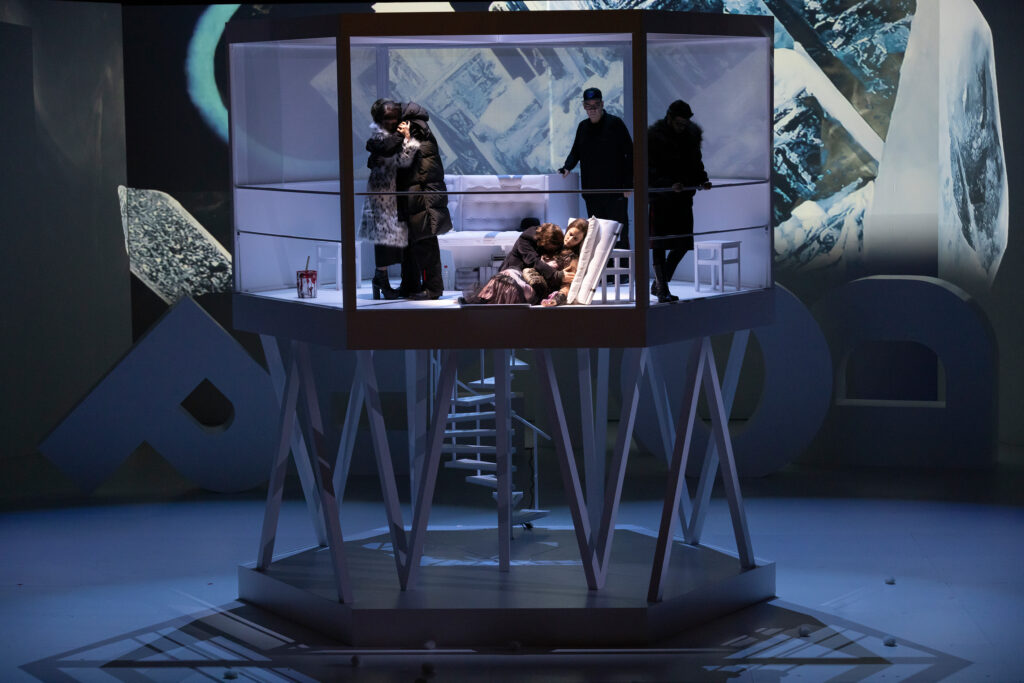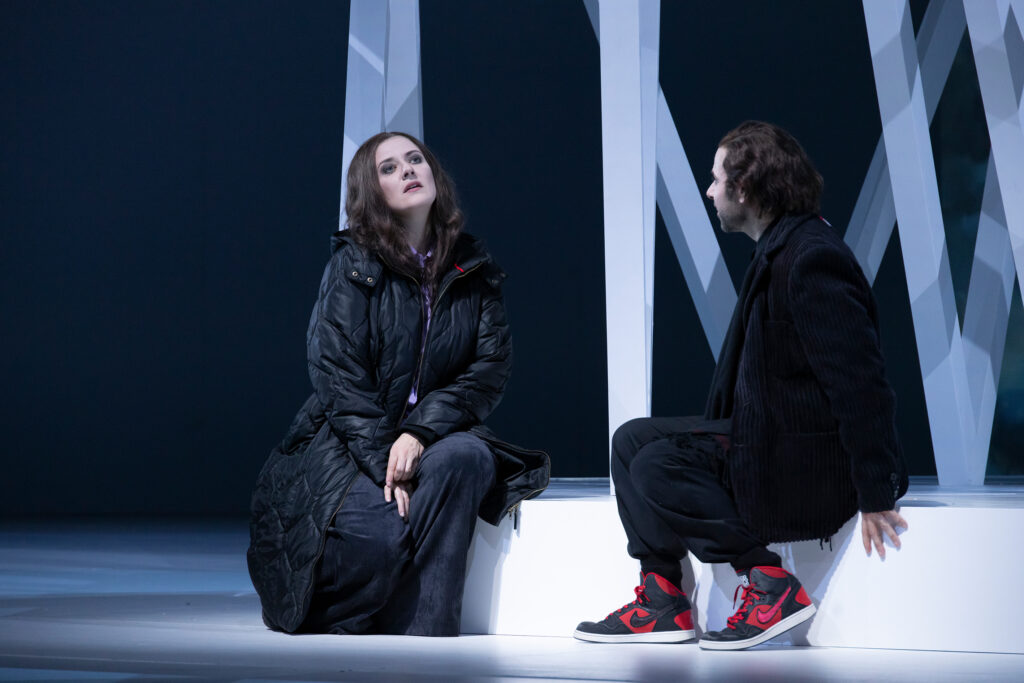Ice age in the Bauhaus city: Christian von Treskow presents a frosty “La bohème” at the Anhaltisches Theater Dessau. Beneath the armor of snow and ice, there is little room for the warming red of love.
It is bitterly cold throughout this new production. In a hexagonal, airy room on the first floor, only accessible via a spiral staircase and on stilts in Bauhaus style, which could be something between a watchtower and a lighthouse (set by Dorien Thomsen), the breadless community of artists around Rodolfo, Colline and Marcello live out their artistic dream. But the reality out there looks different, as we all know, and many things freeze in the cold. Schaunard brings home bread and wine in the traditional manner, and the well-known drama about the dying Mimi takes its course.

Ice crystals, snowflakes and icicles (videos by Luca Fois) projected onto the stage backdrop underpin the setting, which is well suited to the subject matter. And Markus L. Frank on the podium of the Anhaltische Philharmonie Dessau also brings the ice-cold winter Christmas night to life musically with clinking orchestral eruptions.
If it weren’t for the red colour of love, sewn into the characters’ warm winter clothing (costumes by Bernadette Weber), hope would have died long ago. What’s more, the entire stage briefly glows red when Colline (Michael Tews with a confident bass) sings of his wife.
Even the fear that the production will sink into cliché only lasts for a short time, as the second scene brings a little more movement to the drama. The ensemble scene in the OSB shell construction with red light lamps is a Christmas party at the poor man’s table. The audience has a great time, not least because Bogna Bernagiewicz as Musetta is particularly convincing in her aria ‘Quando m’en vo’ with the gripping intensity and vocal expressiveness of her slender soprano. The choirs, rehearsed by Sebastian Kennerknecht and Yuri Colossale, create a beautifully harmonious overall picture of the joyful celebration.

A puzzling directorial idea in the third image is the oversized letters placed in the space, which are not worked with any further and, like the actually interesting winter atmosphere, remain stuck in mere imagery. There is simply too much standing around for the ‘landscape of wintry souls’ so beautifully described in the programme booklet. Mimi finally breathes her last in a bleak, cheerless bluish colour.
Ania Vegry performs the role with great expression and clear intonation, easily rising above any orchestral outburst. Although she tends to be flat in the dramatic passages, her quiet and restrained tones are nuanced and sensitive. Alex Kim stepped in at short notice as Rodolfo, who, with his secure intonation and equally high expressiveness, was a satisfactory addition to the role of Costa Latsos.

In the other roles, Barış Yavuz was particularly convincing as Schaunard with the balsamic timbre of his nuanced baritone and Kay Stiefermann as Marcello with his strong character intonation.
Lots of applause for all involved at the end. Further performances on november 10, 16, 23 and 29, december 26, january 6, 26, february 22.